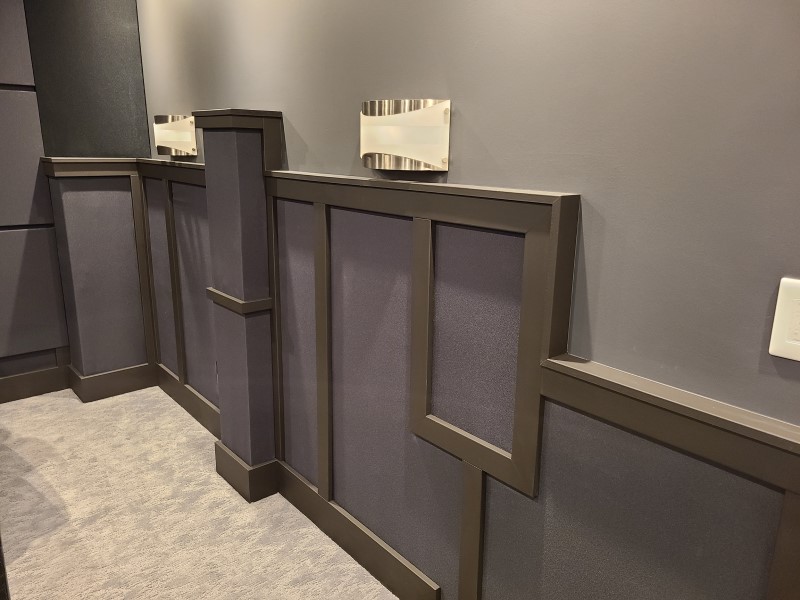How to Add Absorption Panels to Any Room
Whether you are designing a dedicated home theater or just adding a home cinema system to an existing room, you are going to want to add room treatments to the walls. These help tame reflections, make dialogue easier to understand, and generally make the bass better. The problem is that most people don’t think of hanging insulation on the walls as a design option. But there are ways to add absorption panels to any room. You just have to get a little creative.
Hide Them
Your first thought is actually our last. You may think the best way to get absorption panels in to a room is to try to hide them. This doesn’t often work well. A hidden panel is usually not placed where it can do the most good sonically. They are shoved off to the side, placed in corners (which wouldn’t be bad if they were spanning the corner, but they often aren’t), or behind furniture.
The key here it to spend a bit more money on your panels. Sure, you may have large, black panels in mind as that is what is often found in home theaters, but those won’t work in your living room. Instead, splurge on the custom fabrics. Get something that matches your wall color as identically as possible. Now you can “hide” your panels in plain sight.
Also, don’t be limited by the standard size and hanging options. Sure, most panels are 2′ x 4′ but they don’t have to be. You can get custom shapes. Also, you don’t have to hang them from the short side. You can hang them vertically or horizontally. If you get a square panel, you can hang them from a corner. Get creative.
Accent Colors

Our favorite way to integrate absorption panels to your room is to use them as accent colors. We’ve all seen the HGTV shows where some designer tapes off parts of a wall and paints big rectangles, squares, or checkerboard patterns on a wall. Rather than use paint, use panels!. Panels are easy to hang and even easier to swap out if you decide you want to change colors. Even with the checkerboard patter, you can get panels of two different colors and hang them side by side. No, you can’t easily hang something in front of it like you could a painted wall, but you also won’t have to paint. That’s a plus, right?
Printed Panels
Lastly, if you really like your art or pictures, and you don’t want to take them down, you can replace them with printed panels. Places like GiK Acoustics will take your original artwork and print it on an absorption panel to place in your room. It isn’t the cheapest option and it does come with some caveats. You need to own the art. If you are talking about family photos or pictures/art that you took/created yourself, you are fine. Purchased art, as long as it is an original, is also fine. But any mass-market art or poster is off limits. You need to secure the proper license to reprint those on a panel and that’s near impossible (and expensive) to secure.
Also, don’t expect the colors to come out exactly the same. Even with a high-quality photograph to work from, the printing process is never exactly what you expect. It’s like when you run down to your local Target to print out some digital photos. Yes, the look correct on the screen. But they rarely do in the print. Your experiences may vary, but be aware this may be an issue.
Another option is to buy original art that is created on a fabric that is essentially acoustically transparent. If the aesthetic works for you, places like Ghana have custom movie posters painted on flour sacks by local artists. These are all original works of art that can be found on places like eBay. The fabric is relatively acoustically transparent and the art is…unique. Rarely accurately reflecting the content of the movie they claim to represent, they certainly are eye-catching. You can use these to cover your own DIY panels or just hang them over the top of a regular panel.
Conclusion
Adding absorption panels to your room doesn’t have to cause family strife. Finding a way to integrate the panels into an existing room isn’t impossible. It takes a little thought, some discussion, and managing expectations. While it is important to add absorption to your room for acoustic reasons, you don’t need to destroy the aesthetic of the room with a bunch of black panels. Work with your spouse, think outside the box, and you’ll create a room that looks as good as it sounds!


